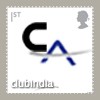
Chartered Accountant
60 Points
Joined November 2011
The limit on buyback of shares in a financial year and leverage is provided in 68(2) (c ) and 68(2)(d) respectively
Condition 1: 68(2)(c ) provides that the buyback can be made upto 25% of the paid up capital
Condition 2: 68(2)(d) (as you have pointed out) requires that the aggregate of the secured and unsecured debts owed by the company after buyback is not more than twice the paid up capital or reserves i.e. debt equity ratio should be 2:1 post buyback(this provision help to ensure that the company does not remain highly leveraged)
Further, the company is required to transfer a sum equal to the nominal value of shares so purchased to the CRR and disclose the details in the balance sheet.
EXAMPLE
Suppose equity shareholder’s funds is
Equity Capital = 500 Lakh (Rs 10 each)
Free Reserves = 200
Total = 700
Loans = 400, nominal value of a share is Rs 10 and the buyback price is say Rs 25.
Ans
Condition 1:
Limit of 25% of (700) = 175
Buyback price per share is Rs 25
Therefore no of shares that can be bought back 175/25 = 7 shares
Condition 2:
As per the provisions the minimum equity should be 400/2 = 200
Available 500, therefore buyback can be made
However, if buyback is made out of distributable profits or securities premium and amount equal to minimal value of shares need to be transferred (section 69)
Therefore even after buyback the debt equity ratio should be 2:1
Now, we know that CRR is not a free reserve and therefore it cannot be taken into account for computing D/E ratio.
To determine the amount available for buyback we need to do a simultaneous equation
Let amount available for buyback be x and amount transferred to CRR be y
Equation1
Amount available for buyback = {(present equity – amount trf to CRR) – Min equity}
X = {(700-y)}-200
Equation 2
Amount trf to CRR = (Amount available for buyback/buyback share price per share) * F.V per share
Y = (x/25)*10
By solving we get
X = 357
Y = 143
Therefore, number of shares eligible to be bought back = 357/25 = 14.28 shares
The maximum number of shares to be bought back is determined as the least of ‘number of shares’ arrived by performing the above tests, accordingly the least is 7 shares from condition 1.
Hope I have made clear the underlying idea.


 CAclubindia
CAclubindia
